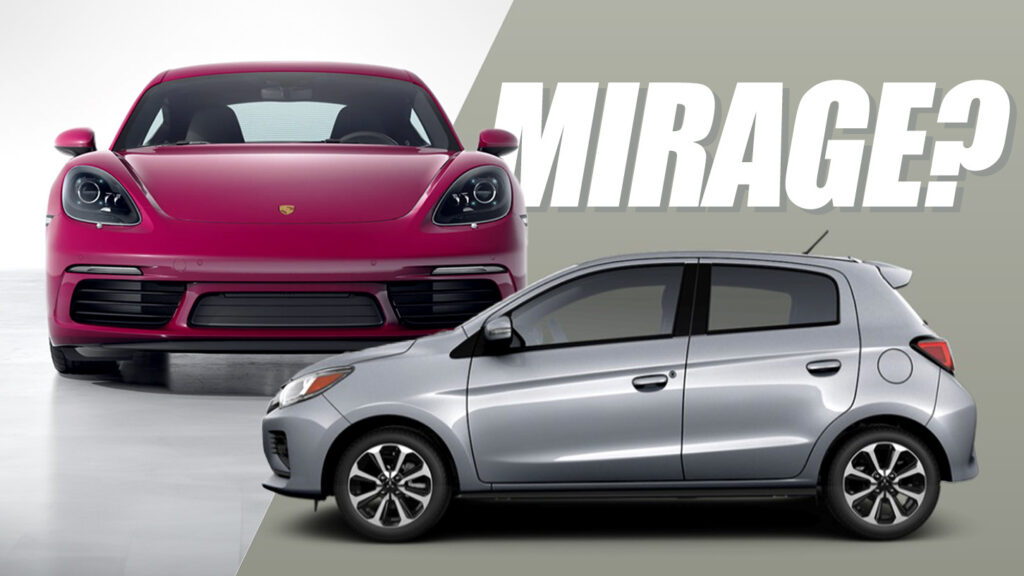- A study finds that many cars reach 60 mph faster when they’re starting from a dead stop than when they’re rolling along at 5 mph.
- Turbocharged vehicles are up to 2 seconds slower to 60 mph when they’re rolling.
- As a result, owners may experience slower-than-expected acceleration when they’re pulling away from the lights.
Can you imagine anything that in which a Mitsubishi Mirage is better than a Porsche 718 Cayman T? Well, acceleration certainly isn’t one of them. However, when it comes to their engines’ responsiveness, the econobox has the sports car beat.
That’s according to a new study from Car and Driver that compares a vehicle’s 0-60 mph (0-96 km/h) time against its performance in a 5-60 mph (8 to 96 km/h) test. The outlet initially started recording the latter acceleration metric in an effort to better replicate what an owner might experience under acceleration in the real world, where people tend not to use launch control or to even rev up their engine before hammering the throttle and taking off from a green light.
Read: Which EV Is The Energy Recovery King?
While looking at the results of the 0-60 and the 5–60 runs, a surprising trend emerged. Car and Driver found that many vehicles are actually slower from a roll than they are from a standstill. The worst performer it drove was the 2020 Porsche 718 Cayman T manual, which managed to reach highway speeds in just 4.4 seconds when it was stopped, but took a full two seconds longer (6.4 seconds) to reach that same speed from a 5 mph crawl.
Making things all the stranger, the Porsche wasn’t the only sporty vehicle to perform worse with a rolling start than it did from a standstill. The 2020 BMW M235i xDrive Gran Coupe (+1.8 seconds) and the 2024 Porsche Cayenne Coupe Turbo GT (+1.7 seconds) were among the vehicles that slowed down the most in the 5-60 test.
5 Least Responsive Powertrains
In general, the study found that vehicles equipped with turbocharged engines struggled in the 5-60 test, making it a good measure of how much lag a driver can expect. Even the best-performing turbocharged vehicle driven by the outlet, the 2021 Hyundai Sonata N-Line, was 0.2 seconds slower from a rolling start than it was from a standstill.
Meanwhile, naturally aspirated vehicles, like the Mitsubishi Mirage performed the best here (excluding EVs and PHEVs whose motors are not affected by this test in the same way as engines). Although the tiny economy car can only reach 60 mph in 12.8 seconds from a stop, it managed to reach that speed 0.1 seconds faster in the 5-60 mph run (12.7). Other vehicles, like the 2020 Nissan Versa, the 2020 Kia Telluride, and the 2023 Honda Pilot TrailSport, all managed to reach 60 mph in the same amount of time, regardless of whether they started at 0 or 5 mph.
5 Most Responsive Turbo Powertrains
While turbo lag seems like a good explanation for what’s going on here, Car and Driver warns that there are some complicating factors in what it is calling its powertrain responsiveness test. The number of performance cars on the list of “least responsive” vehicles may also have to do with the fact that launch control and other technologies are expressly aimed at improving a vehicle’s 0-60 time – not its 5-60 mph time.
Whatever is going on here, it may help explain an experience that many sports car owners have had: struggling to stay ahead of a humdrum family car when accelerating away from a set of lights.




